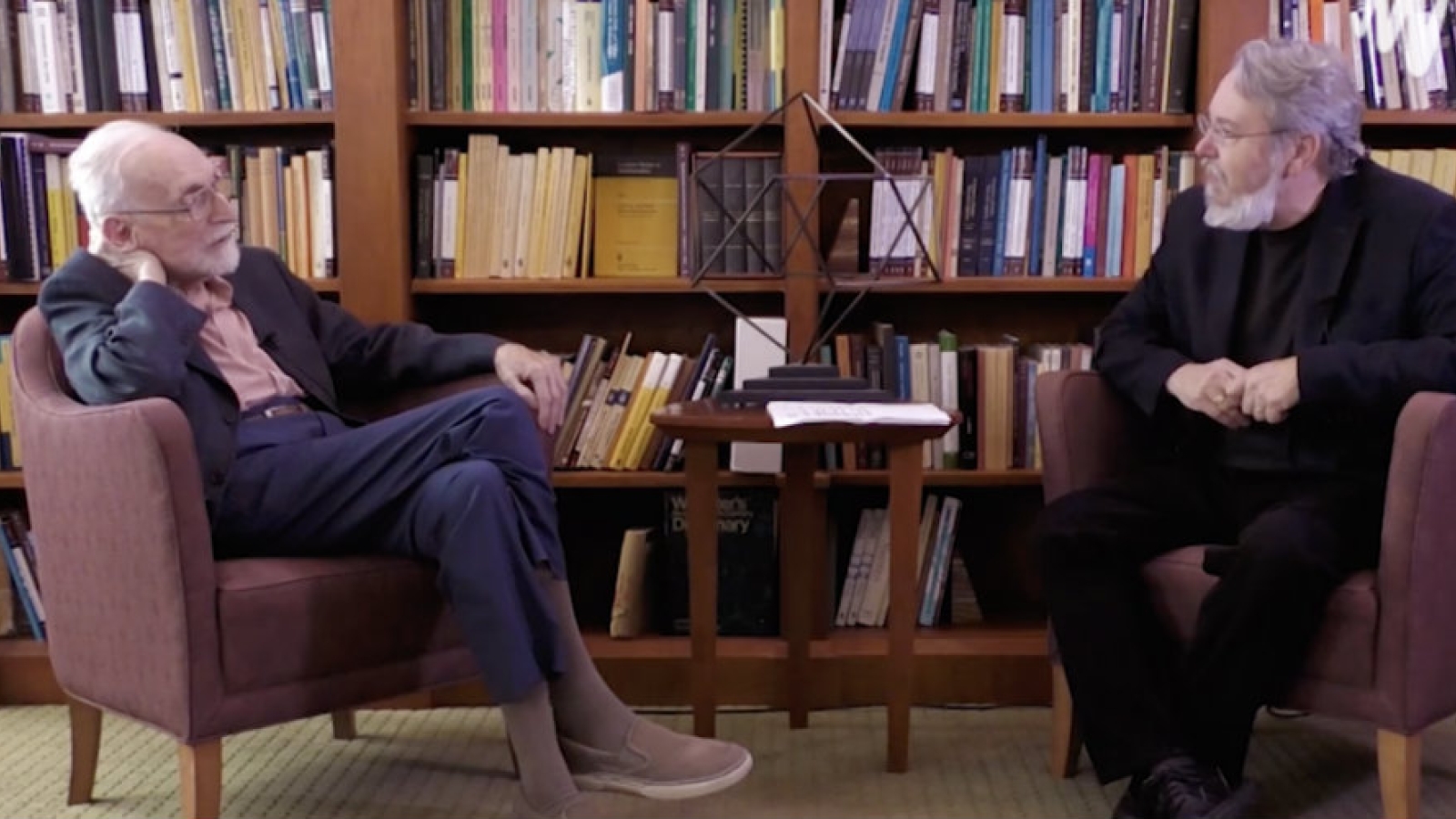Not many mathematicians have a play named after them, but Eugenio Calabi, Thomas A. Scott Professor of Mathematics Emeritus, is an exception: Calabi-Yau premiered at Lincoln Center in 2001. It’s a sign of the impact of his work, which has been vital to string theory and mirror symmetry as well as mathematics.
In a new video interview, Calabi looks back at his life and work, from his birth in Italy (where his father would ask him “Have you found the law of prime numbers?” when he was 10) to having to manually write formulae into typed papers (requiring him to delay his wedding) to his research today.
The interview was inspired by one of Calabi’s former students, Xiuxiong Chen, GR’94. Chen, along with Song Sun and Simon Donaldson, won the 2019 Oswald Veblen Prize in Geometry for work which continued to build on Calabi’s. Chen and Donaldson are at Stony Brook University, the home of the Simons Center for Geometry and Physics (SCGP), a research institute devoted to furthering fundamental knowledge in math and theoretical physics, especially at the interface of the two disciplines. The SCGP fosters interaction between the two fields, hosts conferences, and sponsors many public outreach activities—including an online video library—to interest a wide audience in advances in these areas.
“For many theoretical physicists, Calabi's work and its consequences have been an important part of our mathematical arsenal,” says Luis Alvarez-Gaume, Director of the SCGP. “I realized that we should not miss the opportunity to interview him about his life and vision in mathematics.”
Beginning in the early 1950s, Calabi was working to find a bridge between differential and algebraic geometry. The Calabi conjecture he created was proved in 1978 by mathematician Shing-Tung Yau of Stanford (now at Harvard). Calabi-Yau manifolds provided a way for physicists to show multiple dimensions may be possible, and to construct model universes.
“It’s an amazing thing that if you pursue sufficiently deep math, it has ramifications that escape from the arcane world of pure mathematics,” says Claude LeBrun of the SCGP, who conducted the interview. “I was thrilled and honored to interview Gene Calabi, a largely unsung hero who certainly deserves more public praise.”
“Eugenio Calabi is famous for his fundamental work on global differential geometry, especially complex differential geometry, for which he won the Leroy P. Steele Prize from the American Mathematical Society in 1991,” says Andre Scedrov, Professor and Chair of the Department of Mathematics at Penn. “Calabi–Yau manifolds and the study of constant scalar curvature Kähler metrics and extremal Kähler metrics introduced by Calabi in 1982 are central topics in complex differential geometry.”
In this excerpt, from the interview, Calabi and LeBrun talk about the beginnings of the Calabi conjecture and offer some advice for young scholars.
Watch the full video to learn about Calabi’s life and career, along with some math gossip and in-jokes. The play Calabi-Yau, written by Susanna Speier with music by Stefan Weisman, comes up only briefly, possibly because Calabi and Yau went to see it and couldn’t get in; no one believed they were who they said they were.
The video is part of the SCGP’s video library collection, and can be watched here.



